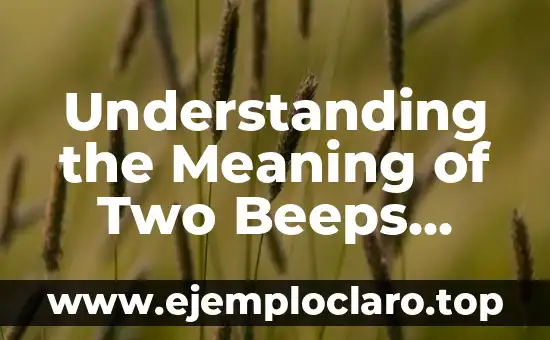Introducción a Counting from 1 to 20 in English
Counting from 1 to 20 in English is a fundamental skill for anyone learning the language, whether you’re a beginner or an advanced learner. Mastering this basic skill is crucial for effective communication, and it’s essential for everyday interactions, academic purposes, and professional settings. In this article, we’ll provide a comprehensive guide to counting from 1 to 20 in English, covering the basics, common mistakes, and practical exercises to help you improve your skills.
The Basics of Counting from 1 to 20 in English
Counting from 1 to 20 in English involves understanding the basic numbers and their pronunciation. Here’s a list of numbers from 1 to 20, along with their pronunciation:
- One (Wun)
- Two (Too)
- Three (Three)
- Four (Fohr)
- Five (Fah-eev)
- Six (Siks)
- Seven (Sev-en)
- Eight (Ate)
- Nine (Nah-in)
- Ten (Ten)
- Eleven (Eh-leh-ven)
- Twelve (Twelv)
- Thirteen (Thur-teen)
- Fourteen (Fohr-teen)
- Fifteen (Fif-teen)
- Sixteen (Siks-teen)
- Seventeen (Sev-en-teen)
- Eighteen (Ate-teen)
- Nineteen (Nah-in-teen)
- Twenty (Twen-tee)
Common Mistakes When Counting from 1 to 20 in English
When learning to count from 1 to 20 in English, many learners make common mistakes. Here are a few examples:
- Mispronouncing numbers: For example, saying elef instead of eleven or fowteen instead of fourteen.
- Confusing numbers: Mixing up similar-sounding numbers, such as sixteen and sixty.
- Forgetting numbers: Omitting numbers or skipping them when counting.
How to Practice Counting from 1 to 20 in English
Practicing counting from 1 to 20 in English is essential to improve your skills. Here are some exercises to help you practice:
También te puede interesar

In the realm of computer diagnostics, the motherboard plays a crucial role in communicating system status through auditory signals. Among these, two beeps during startup can indicate specific issues. Let's delve into the significance of these two beeps and how...

Los números en inglés son una parte fundamental del lenguaje, y aprenderlos es esencial para comunicarse efectivamente en este idioma. En este artículo, vamos a explorar los números en inglés del 1 al 1000, proporcionando una guía detallada y completa...

En un mundo donde la información es clave, el término significado from base de datos se refiere a la extracción de conocimiento y comprensión de los datos almacenados en bases de datos. Este proceso implica convertir datos crudos en información...
- Counting aloud: Practice counting from 1 to 20 aloud, paying attention to pronunciation and intonation.
- Writing exercises: Write the numbers from 1 to 20 in English and practice writing them in different contexts, such as in sentences or in a list.
- Listening exercises: Listen to native speakers count from 1 to 20 and repeat after them.
What Are the Most Common Ways to Use Counting from 1 to 20 in English?
Counting from 1 to 20 in English is used in various contexts, including:
- Shopping: When counting items or money.
- Cooking: When measuring ingredients or counting servings.
- Education: When learning basic math concepts or counting objects.
- Work: When counting inventory, tracking progress, or meeting deadlines.
Can You Count from 1 to 20 in English with Confidence?
Take a moment to test your skills and see how confident you are when counting from 1 to 20 in English. Try counting aloud, writing the numbers, or listening to a native speaker. Identify areas where you need improvement and practice until you feel confident.
How Does Counting from 1 to 20 in English Differ from Other Languages?
Counting from 1 to 20 in English differs from other languages in various ways. For example:
- In Spanish, the numbers 1-20 are similar to English, but with some differences in pronunciation.
- In French, the numbers 1-20 have distinct pronunciations and grammatical rules.
- In Mandarin Chinese, the numbers 1-20 have unique characters and tones.
What Are Some Fun Ways to Practice Counting from 1 to 20 in English?
Practicing counting from 1 to 20 in English doesn’t have to be boring. Here are some fun ways to practice:
- Counting songs and rhymes: Listen to and sing along with songs that count from 1 to 20.
- Counting games: Play games that involve counting, such as Simon Says or Red Light, Green Light.
- Counting challenges: Challenge a friend or family member to a counting competition.
How Can You Use Counting from 1 to 20 in English in Real-Life Situations?
Counting from 1 to 20 in English is a practical skill that can be used in various real-life situations, such as:
- Ordering food: When ordering food at a restaurant, you may need to count the number of items you want.
- Shopping: When shopping, you may need to count the number of items you’re purchasing.
- Meeting deadlines: When working on a project, you may need to count the number of days or hours until a deadline.
What Are Some Common Expressions Used When Counting from 1 to 20 in English?
There are several common expressions used when counting from 1 to 20 in English, including:
- One, two, buckle my shoe: A traditional nursery rhyme that counts from 1 to 20.
- Counting up: When counting from 1 to 20 in ascending order.
- Counting down: When counting from 20 to 1 in descending order.
How Can You Improve Your Counting Skills from 1 to 20 in English?
Improving your counting skills from 1 to 20 in English requires practice and dedication. Here are some tips:
- Practice regularly: Set aside time each day to practice counting from 1 to 20 in English.
- Listen to native speakers: Listen to native speakers count from 1 to 20 to improve your pronunciation and intonation.
- Focus on difficult numbers: Identify numbers that you struggle with and practice them until you feel confident.
What Are Some Interesting Facts About Counting from 1 to 20 in English?
Here are some interesting facts about counting from 1 to 20 in English:
- The number 11 is often pronounced eleven in American English and eleventh in British English.
- The number 12 is often referred to as a dozen in informal contexts.
- The number 20 is often used as a benchmark in mathematical problems.
Can You Count from 1 to 20 in English with a Friend?
Practicing counting from 1 to 20 in English with a friend can be a fun and effective way to improve your skills. Try:
- Taking turns counting from 1 to 20.
- Correcting each other’s mistakes.
- Creating a competition to see who can count the fastest or most accurately.
How Can You Use Counting from 1 to 20 in English in Creative Ways?
Counting from 1 to 20 in English can be used in creative ways, such as:
- Writing a story that incorporates counting from 1 to 20.
- Creating a poem or song that counts from 1 to 20.
- Designing a puzzle or game that involves counting from 1 to 20.
What Are Some Common Counting Mistakes Made by Non-Native English Speakers?
Non-native English speakers may make common mistakes when counting from 1 to 20 in English, including:
- Mispronouncing numbers.
- Confusing similar-sounding numbers.
- Forgetting numbers.
How Can You Overcome Common Counting Mistakes from 1 to 20 in English?
Overcoming common counting mistakes from 1 to 20 in English requires practice, patience, and persistence. Here are some tips:
- Practice regularly.
- Listen to native speakers.
- Focus on difficult numbers.
INDICE

